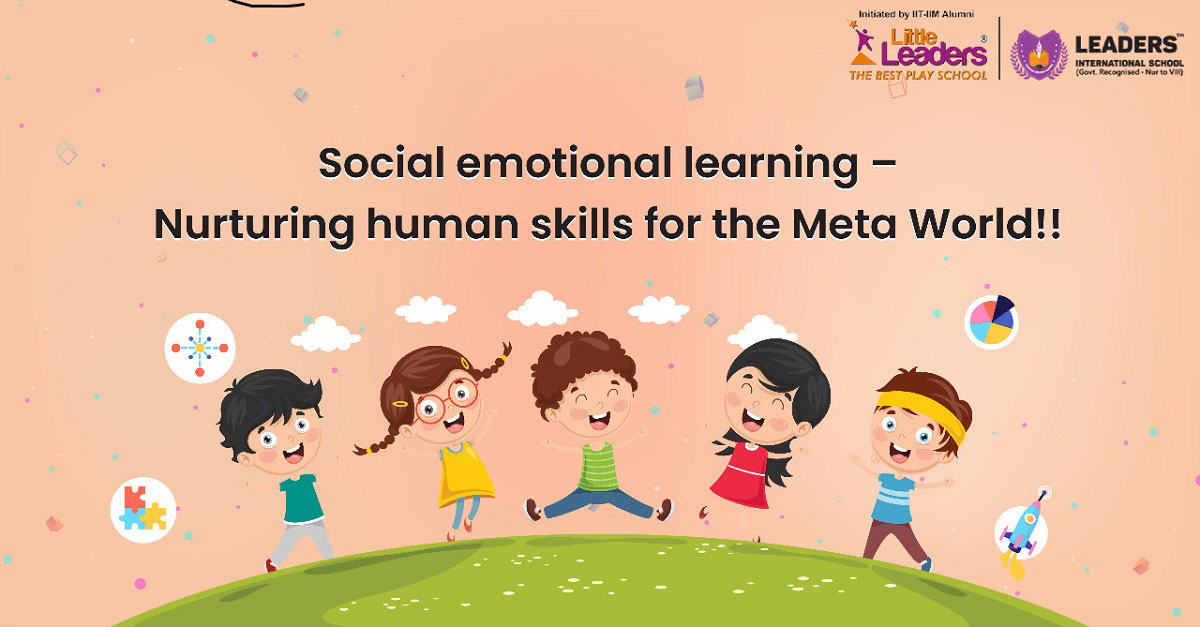
Blogs
Social Emotional Learning – Nurturing Human skills for the Meta World!!

We all heard the phase that, “Human beings are social animals”. They need to nurture the societies for their survival. Human Beings are the most competent organisms with developed brains that can functionin the dynamic and growing world. The growth and development of the human brain can be measured by IQ and EQ levels. But with that there are skills that we need to develop to combat the competitive world.
History of Emotional Intelligence
In 1930, Edward Thorndike, a famous Psychologist defined “Social Intelligence” as the ability to get along with others healthily and positively.
In 1940, Psychologist David Wechsler described that different effective elements of intelligence can determine how successful a person can be.
In 1950,Abraham Maslowfocused on different strategies to boost the emotional strength of people. In 1970,A notion of Multiple Intelligence was put forward by Howard Gardner which introduced the idea that intelligence was more just than a single, general ability.

The term “Emotional Intelligence” was first used by Wayne Payne in a Doctoral Dissertation. A high IQ is also something we tend to be born with while Emotional Intelligence is something we can work to improve.
5 Main Pillars of Social Emotional Learning
- Self-Awareness – Makes a person understand his/her reactions and response.
- Self-Management – Allows to respond better and manages stress and anxiety levels
- Motivation – It helps the person to perform better
- Empathy – It helps in building bonds and relationship also makes the world a happier place to live
- Social Skill - It helps the person to understands the situations, allows better people management
The Social Emotional Theory by Daniel Goleman
Goleman, argued that existing definitions of intelligence needed to be reworked. IQ is important, but intellect alone is no guarantee of adeptness in identifying one’s own emotions or the emotional expressions of others. It takes a special kind of intelligence to process emotional information and utilize it effectively — whether to facilitate good personal decisions, to resolve conflicts or to motivate oneself and others.
There are very practical reasons to promote social and emotional learning in schools, from kindergarten through college. According to Goleman, bullying, disciplinary problems, violence and drug abuse are reduced in schools with a high EQ. With a solid basis in emotional intelligence, academic performance — as well as behavior — improves.
The EQ of children starts developing long before they ever enter a classroom. But EQ levels will vary widely, depending on each child’s home environment. Thus teachers must be able to recognize those children whose emotional literacy needs a boost. Teachers should be ready to talk about feelings in the classroom. The message is that no emotion is “wrong,” but certain ways of expressing those emotions or acting on them are indeed inappropriate.
